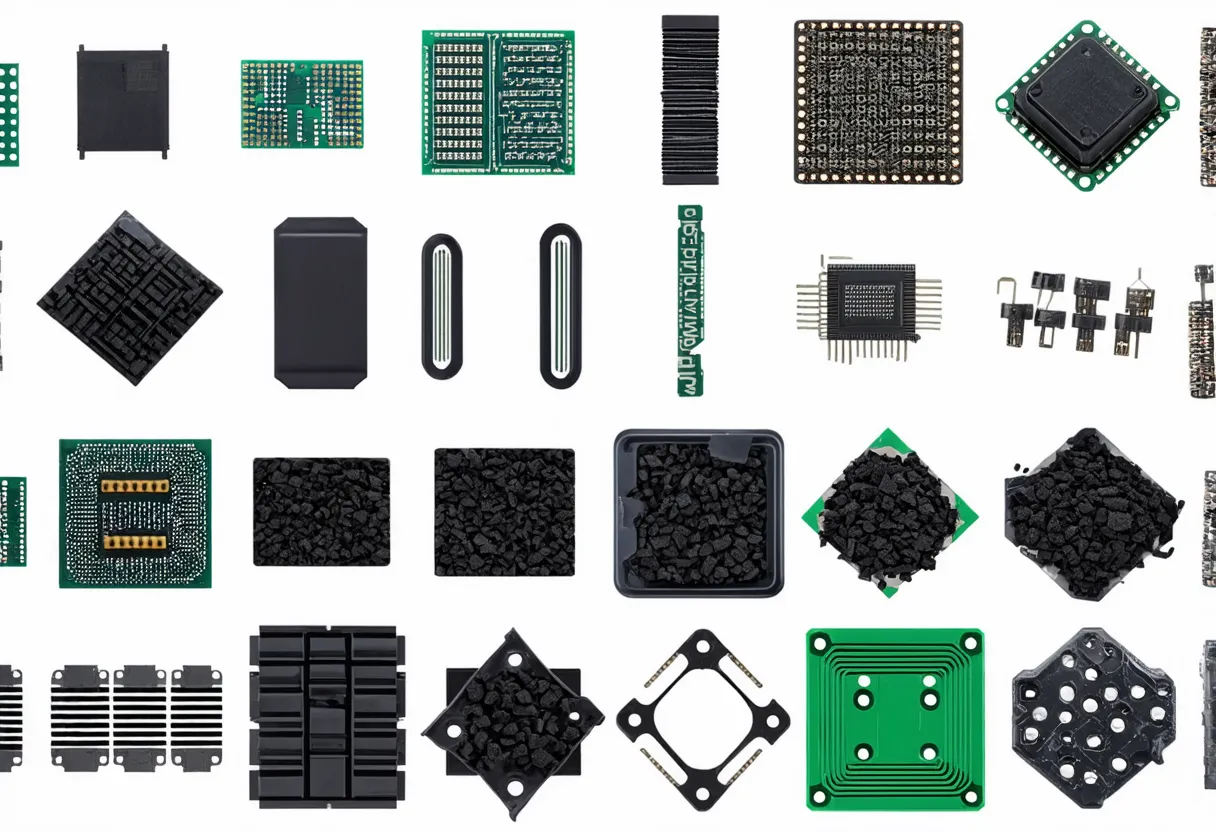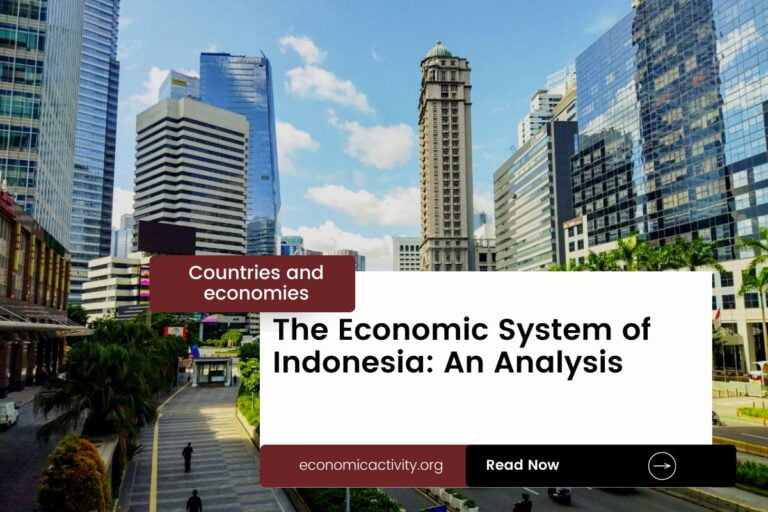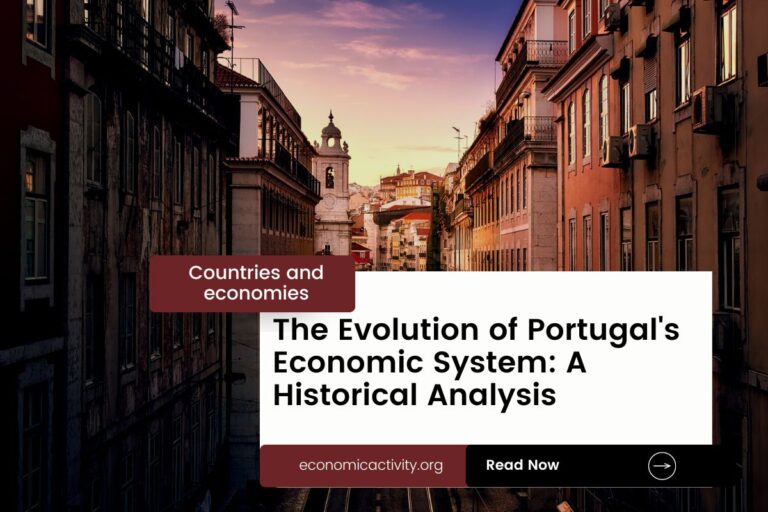The Philippines, with a population of 115,559,009, ranks 13th globally, just behind Ethiopia. Located in Southeast Asia, it covers 300,000 sq. km, ranking 71st, right after Italy.
The Philippines, with a GDP of $404.28 billion in 2022, holds the 38th rank globally. It follows South Africa, whose GDP stands at $405.27 billion. The GDP per capita in the Philippines is $3498.51, placing it at the 127th position. The country trails behind Bolivia, with a GDP per capita of $3600.12.
Despite facing challenges, the Philippines’ economy shows resilience and potential for growth, with a focus on sectors like technology, manufacturing, and services driving its economic position.
What are the economic activities of Philippines?
- Primary activities: 9.6% of GDP.
- Secondary activities: 30.6% of GDP.
- Tertiary activities: 59.8% of GDP.

Primary Sector of Philippines
The primary sector in the Philippines, particularly agriculture, thrives due to its diverse climate and abundant natural resources. With 42.54% of the country’s land dedicated to agriculture, the Philippines produces a variety of crops and animal products. The main agricultural products include sugarcane, rice, coconuts, maize, bananas, vegetables, tropical fruits, plantains, pineapples, and cassava.
Despite contributing 9.6% to the GDP, agriculture plays a crucial role in the economy by providing employment and sustaining livelihoods. The sector’s significance lies in the wide range of products it produces, ensuring food security and economic stability.
The country boasts a diverse geological landscape, providing abundant natural resources. Timber, petroleum, nickel, cobalt, silver, gold, salt, and copper are vital to the economy, contributing significantly to various industries such as mining, agriculture, and energy.
The Philippines’ oil production of approximately 953 barrels per day places it at the 69th position in the world ranking. With oil reserves of 138.5 million barrels, the country holds 0.01% of the world’s oil reserves, contributing to its economic activity.
The Philippines’ gas production of 3,942 million m³ in 2020 ranks 55th globally, further bolstering its economic activity.
Secondary Sector of Philippines
What is the secondary sector or what are secondary activities?
The secondary sector involves industries that transform raw materials from primary activities into finished products for consumption. In the Philippines, main industrial products include semiconductors, electronics, business process outsourcing, food and beverage, construction, energy supply, chemicals, communication equipment, petroleum, textiles, non-metallic minerals, basic metals, and transport equipment.
Manufactures play a crucial role in the total exports of the Philippines, accounting for 79.5% in 2023. This highlights their significant contribution to the country’s economy and global trade competitiveness.
Tertiary sector of Philippines
What is the tertiary sector or what are tertiary activities?
The tertiary sector in the Philippines encompasses various service-oriented activities that enhance productivity and cater to needs. Key activities include restaurants, healthcare, education, banking, communication, media production, and tourism. These sectors provide intangible goods like expertise, entertainment, and essential services to both consumers and businesses.
Specifically, The tourism industry plays a pivotal role in the Philippine economy, contributing significantly to its growth. With over 8.2 million annual arrivals, tourism accounts for 7.15% of the population. Popular destinations like Boracay and Palawan attract visitors worldwide, showcasing the country’s natural beauty and rich cultural heritage, driving economic development through job creation and foreign exchange earnings.
Another example of tertiary economic activity is the mobile cellular sector, with 166 million subscriptions, supporting technological growth. This connectivity fosters innovation, enhances business operations, and drives digital services.
Military Activities and Economic Sectors of Philippines
The military is a clear example of how different economic activities work together. In the primary sector, resources are extracted for military use, like metals for weapons. The secondary sector involves manufacturing military equipment, such as vehicles and weapons. The tertiary sector includes services provided by the military, like training and logistics. The quaternary sector focuses on military research and development, while the quinary sector deals with high-level decision-making and strategy.
In the Philippines, the most recent annual military expenditure is $5,451.7 million. This spending is about 0.996% of the country’s GDP. The active military force has 150,000 personnel, which means there are 15.2 active military members for every 1,000 people in the population.
Biggest company in Philippines
Which is the biggest company in the Philippines? Credicorp is the largest, with a market value of $11.7 billion. It operates in the banking industry, part of the tertiary economic sector. Credicorp was founded in 1995 and plays a key role in the country’s financial services.
International Trade of Philippines
Import Activities of Philippines

The Philippines’ high import activities, accounting for 44.03% of GDP, signify its reliance on foreign goods for economic growth.
The Philippines’ major import activities include integrated circuits, refined petroleum, coal, cars, and plastic products. Its key import partners are China (32%), Indonesia (8%), South Korea (7%), Japan (7%), and Singapore (6%). These imports play a crucial role in the country’s economy and industrial development.
Exports Activities of Philippines
![]()
In 2023, the Philippines had a total export value of $729.23 billion, accounting for 28.39% of its GDP. This signifies a medium level of importance, driving economic growth and providing employment opportunities.
The Philippines exports a variety of products such as integrated circuits, machine parts, gold, semiconductors, and insulated wire. Its top export partners include the US, China, Hong Kong, Japan, and Singapore, with the US and China being the largest at 14% each.
Philippines economy challenges in 2024
The Philippines, a growing Southeast Asian economy, faces challenges in 2024. Despite a commercial rebound in transportation, construction, and financial services, inflation has led to interest rate rises. Electronics exports are recovering, but regional tensions with China create uncertainties. Remittances remain significant, but the country must navigate these obstacles to sustain its economic growth.




Leave a Reply